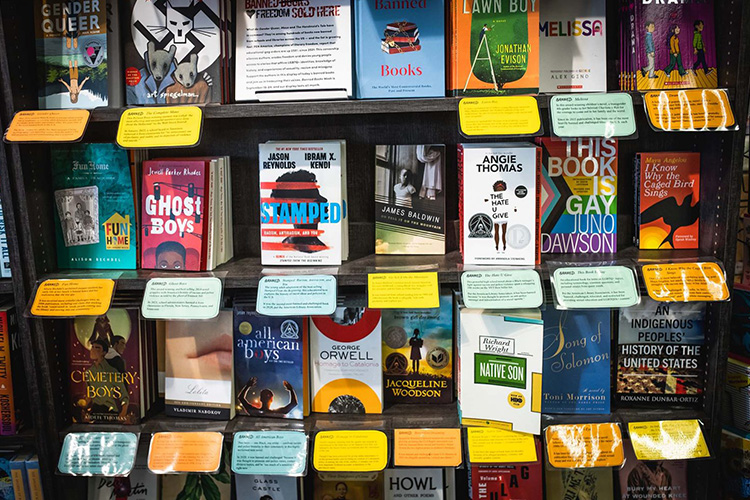
Numerous bookstores have started to display frequently banned books, a practice that many customers approve of. photo by Jackie Ricciardi
Among the skyrocketing book bans across the country, a troubling trend has emerged: books written by people of color or queer authors, or books that contain diverse characters, are disproportionately represented in bans, depriving young readers of representation.
In 2022, over 2,500 different books were challenged in America—an almost 40% increase in the number of books targeted in 2021. Many challengers profess wanting to protect their children as their motivation for challenging a book. A variety of reasons for challenges was provided, with many insisting the books were too sexually explicit or unsuitable for their intended age group. Among the top 13 most challenged books of 2022, one of the reasons given for each challenge was the claim that they are sexually explicit. In addition, over half of them were challenged because they contain LQBTQ+ content, a concerning correlation. Not, however, because books that contain LGBTQ+ themes or characters are inherently more sexual, but because banners say they are, leading to restrictions on important books.
I have only read one book on this list: Gender Queer: A Memoir by Maia Kobabe, who uses e/em/eir pronouns. Gender Queer is a graphic novel about the author’s exploration of gender and sexuality and is recommended for a high school audience. Inevitably, it includes scenes of nudity and sex as Kobabe struggles with eir perception of and relationship with eir body and sexuality. When shown out of context, as often happens during banning discussions around this book (and I wonder how many of the people who want to ban this book have actually read it in full), these scenes seem explicit and unnecessary, but in reality they only show the author’s own lived experiences. They are not meant to be pornographic or indoctrinate kids, a claim made by many against this book and others.
I honestly don’t think that the people who want this book and others like it banned are concerned about kids seeing nudity or reading about sexual situations. The fact that many queer and other types of diverse books are claimed to be too sexually explicit even if there is nothing sexual about their content demonstrates how book banners simply don’t want kids to read about diversity. This can be very dangerous, not only for the authors who publish diverse books or the librarians and booksellers who supply them, but also for the kids who need to see themselves in what they read. It is very important to provide books that kids of all identities can see themselves in so that they feel less alone. For queer kids, reading a book with a character who has the same identity as them, whether it be sexuality or gender, can even be life-saving.
In an article for the Washington Post, Kobabe writes, “Removing or restricting queer books in libraries and schools is like cutting a lifeline for queer youth, who might not yet even know what terms to ask Google to find out more about their own identities, bodies and health.” Parents who truly want to protect their children need to support them and let them read about diverse characters and themes, instead of trying to remove any diversity from existence.